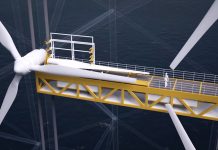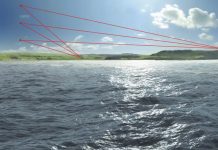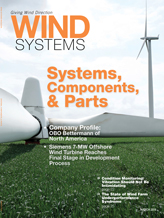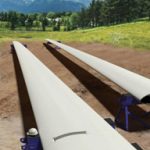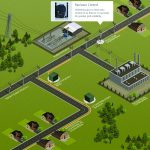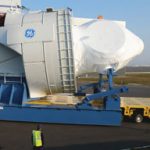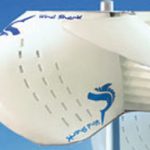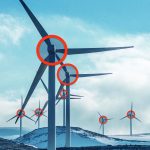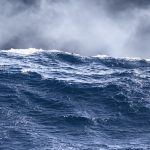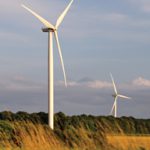A new design for gigantic blades longer than two football fields could help bring offshore 50-MW wind turbines to the United States and the world.
Sandia National Laboratories’ research on the extreme-scale segmented ultralight morphing rotor (SUMR) is funded by the Department of Energy’s (DOE) Advanced Research Projects Agency-Energy program. The challenge is to design a low-cost offshore 50-MW turbine requiring a rotor blade that is more than 650 feet (200 meters) long — two-and-a-half times longer than any existing wind blade.
The team is led by the University of Virginia and includes Sandia and researchers from the University of Illinois, the University of Colorado, the Colorado School of Mines and the National Renewable Energy Laboratory. Corporate advisory partners include Dominion Resources, General Electric Co., Siemens AG, and Vestas Wind Systems.
“Exascale turbines take advantage of economies of scale,” said Todd Griffith, lead blade designer on the project and technical lead for Sandia’s offshore wind energy program.
Sandia’s previous work on 13-MW systems uses 100-meter blades (328 feet) on which the initial SUMR designs are based. While a 50-MW horizontal wind turbine is well beyond the size of any current design, studies show that load alignment can dramatically reduce peak stresses and fatigue on the rotor blades. This reduces costs and allows construction of blades big enough for a 50-MW system.
Most current U.S. wind turbines produce power in the 1- to 2-MW range, with blades about 165 feet (50 meters) long, while the largest commercially available turbine is rated at 8 MW with blades 262 feet (80 meters) long.
“The U.S. has great offshore wind energy potential, but offshore installations are expensive,” Griffith said. “Larger turbines are needed to capture that energy at an affordable cost.”
Barriers remain before designers can scale up to a 50-MW turbine — more than six times the power output of the largest current turbines.
“Conventional upwind blades are expensive to manufacture, deploy, and maintain beyond 10 to 15 MW,” Griffith said. “They must be stiff to avoid fatigue and eliminate the risk of tower strikes in strong gusts. Those stiff blades are heavy, and their mass — which is directly related to cost — becomes even more problematic at the extreme scale due to gravity loads and other changes.”
According to Griffith, the new blades could be more easily manufactured in segments, making them more cost-effective and avoiding the unprecedented scale of equipment needed for transport and assembly of blades built as single units.
The exascale turbines would be sited downwind, unlike conventional turbines that are configured with the rotor blades upwind of the tower.
SUMR’s load alignment is bio-inspired by the way palm trees move in storms. The lightweight, segmented trunk approximates a series of cylindrical shells that bend in the wind while retaining segment stiffness. This alignment radically reduces the mass required for blade stiffening by reducing the forces on the blades using the palm tree-inspired load-alignment approach.
Segmented turbine blades have a significant advantage in parts of the world at risk for severe storms, such as hurricanes, where offshore turbines must withstand tremendous wind speeds of more than 200 mph. The blades align themselves to reduce cantilever forces on the blade through a trunnion hinge near the hub that responds to changes in wind speed.
“At dangerous wind speeds, the blades are stowed and aligned with the wind direction, reducing the risk of damage,” Griffith said. “At lower wind speeds, the blades spread out more to maximize energy production.”
Moving toward exascale turbines could be a key way to meet the DOE’s goal of providing 20 percent of the nation’s energy from wind by 2030, as detailed in its recent Wind Vision Report.
— Source: Sandia National Laboratories
For more information,
go to www.sandia.gov.
















